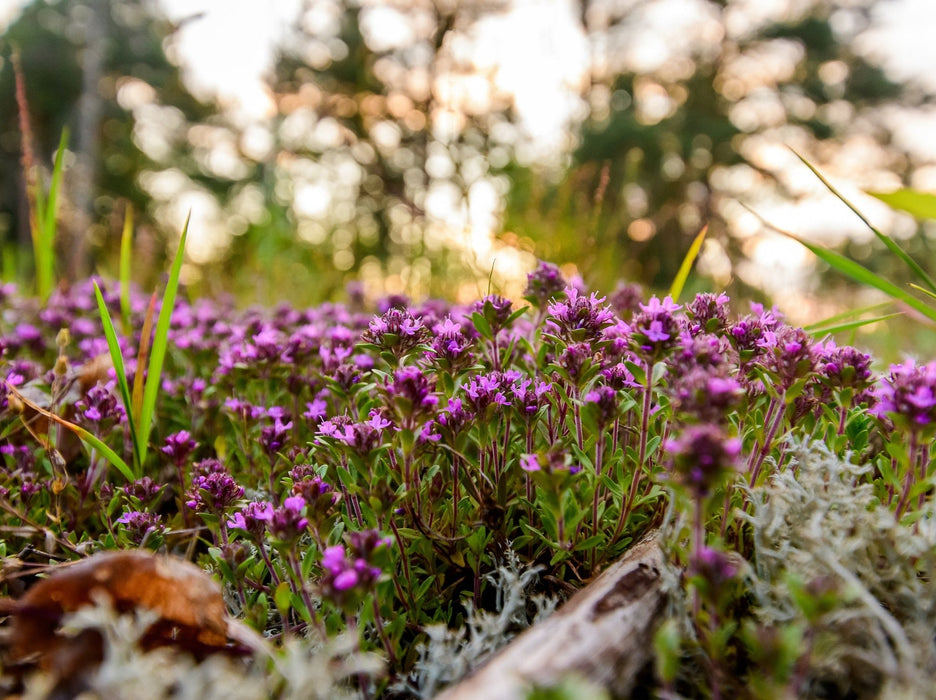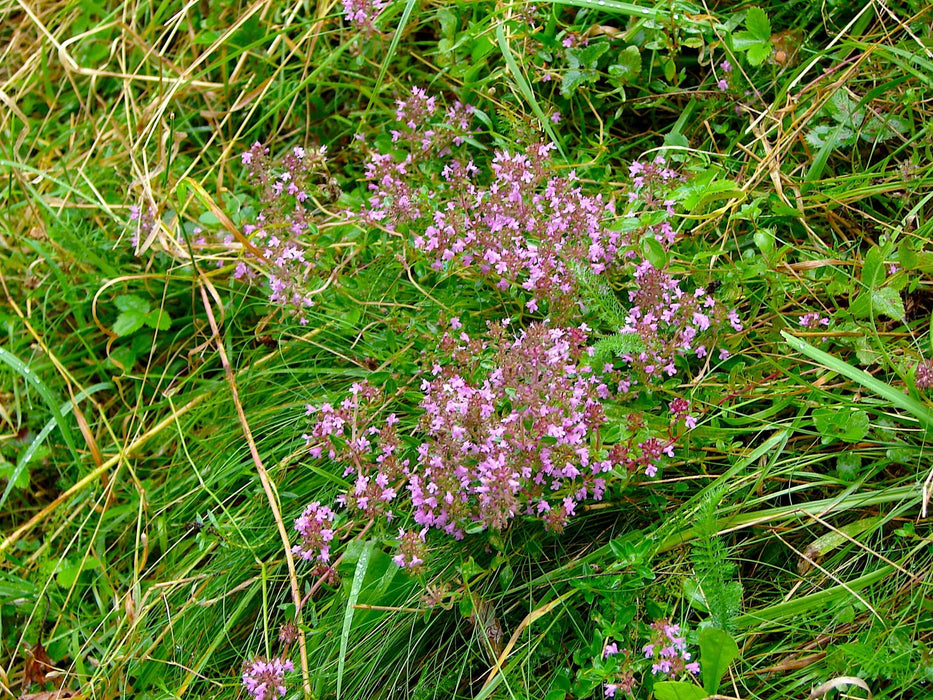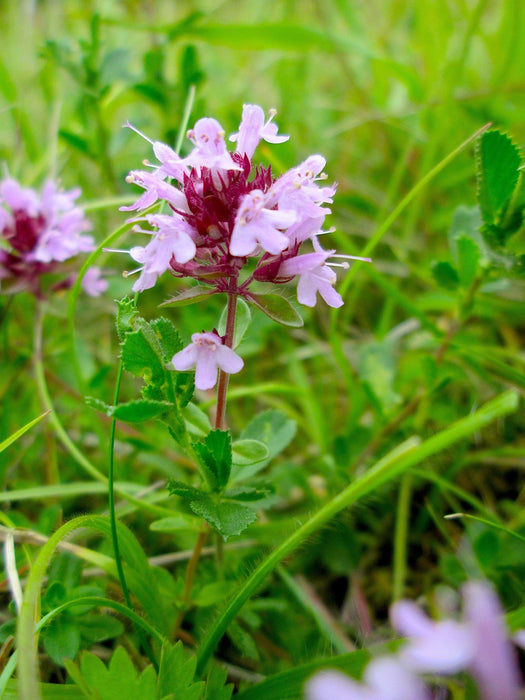
Wild Creeping Thyme Seeds (Thymus serpyllum)
Bring color and life to a plain lawn – or grow a fragrant bee-friendly ground cover.
While not native to North America, wild creeping thyme is well adapted to many climates without becoming invasive. This small, colorful wildflower does not compete well with taller, faster-growing vegetation, but it can grow and persist nicely within mowed lawns or as a ground cover in gravel areas and rock gardens.
Slow growing, long-lived, and sun-loving, this small highly drought-tolerant member of the mint family spreads slowly from tiny, woody stems. Without grass competition, it can eventually form a thick ground cover. Within grass, it tends to form smaller and more spread-out stems.
Like other thymes, this is a highly fragrant plant, with abundant small pink flowers that are extremely attractive to many species of bees, and quite a few butterflies (it’s actually one of the few eco-lawn or ground cover plants we know of that consistently attracts many butterflies).
Wild thyme is slow to germinate and start from seed, and can take several seasons before it puts on enough size to start flowering. Once established it is very well adapted to planters, rock gardens, and lawns – it can even be “encouraged” as a total lawn replacement by regular weeding out of grass clumps around it as it grows (we know of a few folks who did this over several years and have entire flowering front yards consisting of creeping thyme.
As a lawn plant or ground cover, creeping thyme is tolerant of light foot traffic, but on its own, it is not sturdy enough to withstand heavy play or pet trampling. To use it in a diverse “wild lawn” we recommend companion planting with various fine leaved fescues (e.g. sand, red, western, Molate, Roemer’s, Idaho, and hard fescues), prairie junegrass, seashore bentgrass, and other mowable low growing wildflowers (yaak yarrow, golden-eyed grass, self heal, and various clovers).
Wild thyme can be introduced into an existing lawn by first mowing the grass as low as possible (i.e. “scalping” it), then removing the clippings. Next a core aerator (which can be rented at many hardware stores) is used to create openings in the turf. Thyme (and other wildflower seeds) can then be over-seeded across the lawn.
Hardy from about zone 3 to 10, and very tolerant of poor soils.
Approximately 2000+ seeds (0.5 grams).


